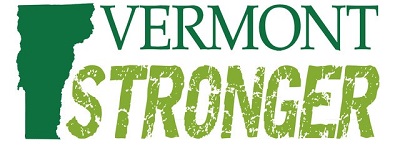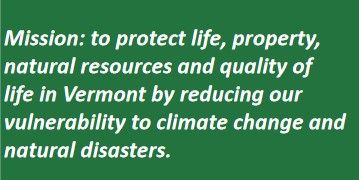2023 State Hazard Mitigation Plan
Vermont's State Hazard Mitigation Plan (SHMP or Plan) identifies natural hazards that affect Vermont, assesses risk and vulnerability to these hazards, and identifies top priority mitigation actions at the State level to remove vulnerability and create a more resilient Vermont. The Plan must be updated and submitted by Vermont Emergency Management (VEM) to the Federal Emergency Management Agency (FEMA) for approval every five years. Updating the Plan is required in order for Vermont to remain eligible to receive FEMA funding before and following disasters.
The Plan was last updated and FEMA-approved in November 2023 and will be effective until November 2028. Learn more about the process on the Stakeholder Engagement page.
View and download the 2023 SHMP and appendices with links provided below. You can also view the Vermont SHMP Implementation Tracker dashboard.
See our State Hazard Mitigation Plan Annual Report for 2024 to learn about progress in implementing the 2023 SHMP.
Contact Us!
Contact Caroline Paske at Caroline.Paske@Vermont.gov with any questions regarding the SHMP.


2023 State Hazard Mitigation Plan - Full Plan *
2023 State Hazard Mitigation Plan - Mitigation Actions *
Appendices:
- Appendix to Section 3 - Capabilities List
- Appendix to Section 3 - Jurisdictions by RPC Maps
- Appendix to Section 3 - Project Review Form_2022
- Appendix to Section 3 - State of VT Owned Assets and Replacement Values - 2023 Values (Request as needed)
- Appendix to Section 3 - State Owned Assets Vulnerability Assessment
- Appendix to Section 4 - High and Significant Hazard Dams (Under Revision)
- Appendix to Section 4 - RIP Capital Projects Roads 2023 (See: VTrans RIP StoryMap)
- Appendix to Section 4 - RIP Capital Projects Structures 2023
- Appendix to Section 4 - State Assets in the Wildland Urban Interface (WUI)
- Appendix to Section 4 - Vermont Disaster History by Event Type
- Appendix to Section 5 - National Risk Index (NRI) Comparison Report by County
- Appendix to Section 5 - NRI Jurisdictions Most Vulnerable by Hazard and Maps
- Appendix to Section 5 - VT Building Exposure Values by County and Hazard from the NRI
- Appendix to Section 5 - VT Building Exposure Values from the NRI - Detailed
- Appendix to Section 5 - Washington County Vulnerable Community Lifeline Asset Maps
- Appendix to Section 5 Relatively Moderate Census Tracts Comparison Report - National Risk Index
- Appendix to Section 6 - 2018 SHMP Actions - Current Status
* The 2023 Vermont SHMP is considered in DRAFT form during final formatting, however content is final and the plan should be treated as the most recent adopted and approved SHMP for Vermont.
- VISION: Vermont will be safe and resilient in the face of climate change and natural disasters.
- MISSION: To protect life, property, natural resources and quality of life in Vermont by reducing our vulnerability to climate change and natural disasters.
- GOALS:
- Protect, restore and enhance Vermont’s natural resources to promote healthy, resilient ecosystems.
- Enhance the resilience of our built environment - our communities, infrastructure, buildings, and cultural assets.
- Develop and implement plans and policies that create resilient natural systems, built environments and communities.
- Create a common understanding of – and coordinated approach to – mitigation planning and action.
Vermont's State Hazard Mitigation Plan identifies natural hazards that affect Vermont, assesses risk and vulnerability to these hazards, and identifies top priority mitigation actions at the State level to remove vulnerability and create a more resilient Vermont.

